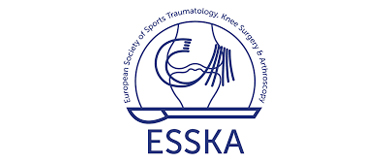
What are Sports Injuries?
Sports injuries are injuries sustained by athletes or active individuals while playing indoor or outdoor sports such as football, basketball, baseball, hockey, tennis, or while exercising.
Causes of Sports Injuries
Sports injuries may result from accidents, poor training practices, use of improper protective gear, lack of conditioning, and insufficient warm-up and stretching.
Types of Sports Injuries
Sports injuries may be either
- Acute: Sprains, fractures, tears
- Chronic: Tendonitis, overuse injury
Symptoms of Sports Injuries
Some of the common symptoms of sports injuries include:
- Pain
- Swelling
- Stiffness
- Bruising
- Bleeding
- Concussion
- Cuts and abrasions
- Dehydration
- Fracture
Diagnosis of Sports Injuries
Sports injuries are diagnosed with a detailed medical review and thorough physical examination. Your doctor may order certain imaging studies such as X-rays, MRI and CT scan to confirm on the diagnosis.
Sports Injury Management
When you suffer an injury during sports events, never try to continue the activity in pain because it may cause further harm. Some injuries may require prompt attention by a doctor, while others can be treated at home with rest, application of ice.
You should seek medical treatment if:
- The injury is causing severe pain, swelling or numbness.
- You are not able to put any weight on the injured area.
- The pain or dull ache of an old injury has increased along with swelling and joint instability.
If you do not have any of the symptoms mentioned above, you can adopt self-care treatment at home. You should follow the RICE method immediately after injury to relieve pain and inflammation. These steps should continue for at least 48 hours.
- Rest: You should take rest from regular exercises or daily activities as needed.
- Ice: Apply an ice pack over the injured area for 20 minutes at a time. This should be done four to eight times a day. A cold pack, ice bag, or plastic bag filled with crushed ice and wrapped in a towel can be used.
- Compression: Compress the injured area with elastic wraps, special boots, air casts, and splints. This helps to reduce swelling.
- Elevation: Keep the injured elbow or wrist elevated on a pillow, above the level of the heart. This is to help decrease swelling.
Your doctor may recommend other treatments to help your injury heal. These include:
- Non-steroidal anti-inflammatory drugs: These drugs reduce swelling and pain.
- Immobilization: Immobilization is minimizing the movement of the injured area to prevent further damage. It also reduces pain, swelling and muscle spasm. Slings are given to immobilize the arms and shoulders.
- Rehabilitation: Rehabilitation involves exercises that get the injured area back to normal conditions. Exercises start with gentle range-of-motion exercises followed by stretching and strengthening exercises.
- Other therapies: Other common therapies that help in the healing of sports injuries include mild electrical currents (electrostimulation), cold packs or cryotherapy, heat packs or thermotherapy, high-frequency sound waves (ultrasound), massage and platelet-rich plasma (PRP) injections.
- Surgery: Surgery is the last resort for the management of sports injuries and is indicated only if conservative techniques are not helpful. Surgeries are performed to repair torn tendons and ligaments or to realign the broken bones. Your surgeon may recommend an arthroscopic procedure or open techniques to treat your sports injuries.












